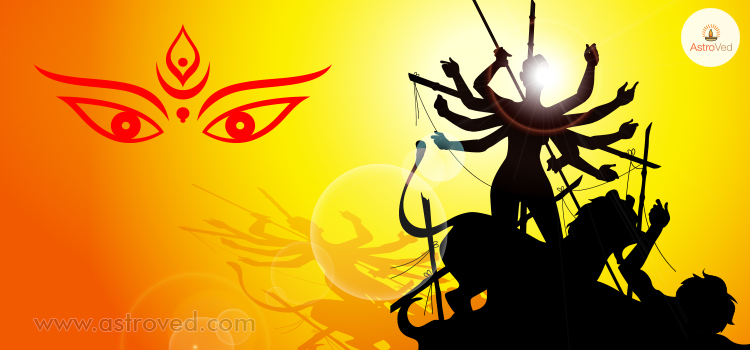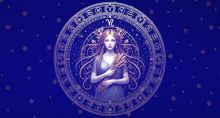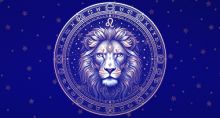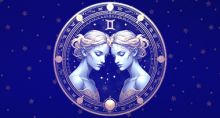Significance Of The Arrival & Departure of Goddess Durga In Different Carriers Each Year
Who is Goddess Durga?
Durga is the supreme Goddess Adi-Parashakthi herself. The term Durga means ‘the invincible’. She is the embodiment of all shakthis, the great powers and remains the prime female deity of the Hindu pantheon. She is believed to be eternal, with no beginning or end, and is regarded as Swayambhu, the one who has manifested on her own.
 What is the significance of Navarathri?
Navarathri is a grand festival that celebrates the yearly arrival of this great Goddess Durga and hence, is also referred to as Durga Puja. The festival involves nine nights of celebrations, during which, each of the nine forms or aspects of Durga, together referred to as ‘Navadurgas’, is invoked and worshipped. Though there are Navarathris in all the seasons, it is the autumn Navarathri which is very widely celebrated as the Navarathri festival. It falls in Shukla Paksha, the bright fortnight, of the month of Ashwin or Purattasi, that corresponds to September-October. While Navarathri is celebrated with intense religious fervor all over the country, the grandest of celebrations takes place in the Eastern parts of the country, like the state of West Bengal.
What are the Vahans or the carriers of the Goddess and on what basis they are chosen?
While the advent of the mother Goddess Durga is considered highly auspicious and is cerebrated as an occasion for rejoicing and celebrating, the different Vahans, that is, the mounts or the carriers that she uses for making this annual sojourn are also considered equally important. For, her choice of these mounts is believed to hold significant indications about how good or otherwise, the year is going to be for the people.
No doubt, it is the Lion that remains as the most prominent vehicle of the Goddess. But she does have and travel by four more Vahans, and these are the elephant, the horse, the boat and the palanquin. The choice of the mount that she decides as her vehicle for arriving for the Navarathri puja on a particular year depends on the day of the week that the festival begins, and so is her choice of the vehicle for departing, after the puja gets over too.
It is believed that on Sundays and Mondays, the mother arrives and departs on elephant back; on Tuesdays and Saturdays, riding a horse; on Wednesdays, by a boat; and on Thursdays and Fridays, through a palanquin. She doesn’t normally arrive and depart by the same vehicle, and if she does so, it is not considered a good sign for the land and the people.
What is the significance of the different carriers of Maa Durga?
The elephant mount of the Goddess is believed to indicate good tidings and the Goddess is expected to bring in abundant blessings with her. The year in which she comes or goes riding an elephant, will turn out to be one of prosperity and happiness. The harvest will be good; honest work will give handsome results; and people will live a life of good fortune.
The horse carrier, however, is considered the antithesis of the elephant. Being the animal used in conflicts and wars from very old times, the horse is held as a pointer to destruction. The choice of this mount for the divine mother’s arrival or departure on a particular year, will prove unfortunate for the people at large. On such occasions, people will offer earnest prayers to her during Navarathri, seeking the strength to face the difficult times ahead.
The carrier of boat is considered good for the world, though the results may not be that long lasting. A boat travels in water. And the mother, riding the same is expected to ensure a good monsoon, strong fertility of the soil, a plentiful harvest and overall prosperity.
The palanquin mount of the Goddess is not considered good, and the coming in or the going out of the mother in this carrier is feared to forecast bad times and something widespread like an epidemic. Here also, people pray to the mother for the necessary fortitude to face the challenge together.
In the current year 2017, Goddess Durga is scheduled to arrive for the Navarathri, on her elephant mount and leave, on a horse. As explained, the elephant carrier is considered good, indicating bountiful harvest and prosperity this year. However, the horse doesn’t portend good times and may indicate poor rains and drought like conditions, in the following year. Also, this year’s Navarathri is for 10 days, instead of the usual 9 days, and hence, the concluding day of Vijayadashami will fall on the 11th day, as against the 10th. This too is believed not auspicious.
What is the significance of Navarathri?
Navarathri is a grand festival that celebrates the yearly arrival of this great Goddess Durga and hence, is also referred to as Durga Puja. The festival involves nine nights of celebrations, during which, each of the nine forms or aspects of Durga, together referred to as ‘Navadurgas’, is invoked and worshipped. Though there are Navarathris in all the seasons, it is the autumn Navarathri which is very widely celebrated as the Navarathri festival. It falls in Shukla Paksha, the bright fortnight, of the month of Ashwin or Purattasi, that corresponds to September-October. While Navarathri is celebrated with intense religious fervor all over the country, the grandest of celebrations takes place in the Eastern parts of the country, like the state of West Bengal.
What are the Vahans or the carriers of the Goddess and on what basis they are chosen?
While the advent of the mother Goddess Durga is considered highly auspicious and is cerebrated as an occasion for rejoicing and celebrating, the different Vahans, that is, the mounts or the carriers that she uses for making this annual sojourn are also considered equally important. For, her choice of these mounts is believed to hold significant indications about how good or otherwise, the year is going to be for the people.
No doubt, it is the Lion that remains as the most prominent vehicle of the Goddess. But she does have and travel by four more Vahans, and these are the elephant, the horse, the boat and the palanquin. The choice of the mount that she decides as her vehicle for arriving for the Navarathri puja on a particular year depends on the day of the week that the festival begins, and so is her choice of the vehicle for departing, after the puja gets over too.
It is believed that on Sundays and Mondays, the mother arrives and departs on elephant back; on Tuesdays and Saturdays, riding a horse; on Wednesdays, by a boat; and on Thursdays and Fridays, through a palanquin. She doesn’t normally arrive and depart by the same vehicle, and if she does so, it is not considered a good sign for the land and the people.
What is the significance of the different carriers of Maa Durga?
The elephant mount of the Goddess is believed to indicate good tidings and the Goddess is expected to bring in abundant blessings with her. The year in which she comes or goes riding an elephant, will turn out to be one of prosperity and happiness. The harvest will be good; honest work will give handsome results; and people will live a life of good fortune.
The horse carrier, however, is considered the antithesis of the elephant. Being the animal used in conflicts and wars from very old times, the horse is held as a pointer to destruction. The choice of this mount for the divine mother’s arrival or departure on a particular year, will prove unfortunate for the people at large. On such occasions, people will offer earnest prayers to her during Navarathri, seeking the strength to face the difficult times ahead.
The carrier of boat is considered good for the world, though the results may not be that long lasting. A boat travels in water. And the mother, riding the same is expected to ensure a good monsoon, strong fertility of the soil, a plentiful harvest and overall prosperity.
The palanquin mount of the Goddess is not considered good, and the coming in or the going out of the mother in this carrier is feared to forecast bad times and something widespread like an epidemic. Here also, people pray to the mother for the necessary fortitude to face the challenge together.
In the current year 2017, Goddess Durga is scheduled to arrive for the Navarathri, on her elephant mount and leave, on a horse. As explained, the elephant carrier is considered good, indicating bountiful harvest and prosperity this year. However, the horse doesn’t portend good times and may indicate poor rains and drought like conditions, in the following year. Also, this year’s Navarathri is for 10 days, instead of the usual 9 days, and hence, the concluding day of Vijayadashami will fall on the 11th day, as against the 10th. This too is believed not auspicious.
 What is the significance of Navarathri?
Navarathri is a grand festival that celebrates the yearly arrival of this great Goddess Durga and hence, is also referred to as Durga Puja. The festival involves nine nights of celebrations, during which, each of the nine forms or aspects of Durga, together referred to as ‘Navadurgas’, is invoked and worshipped. Though there are Navarathris in all the seasons, it is the autumn Navarathri which is very widely celebrated as the Navarathri festival. It falls in Shukla Paksha, the bright fortnight, of the month of Ashwin or Purattasi, that corresponds to September-October. While Navarathri is celebrated with intense religious fervor all over the country, the grandest of celebrations takes place in the Eastern parts of the country, like the state of West Bengal.
What are the Vahans or the carriers of the Goddess and on what basis they are chosen?
While the advent of the mother Goddess Durga is considered highly auspicious and is cerebrated as an occasion for rejoicing and celebrating, the different Vahans, that is, the mounts or the carriers that she uses for making this annual sojourn are also considered equally important. For, her choice of these mounts is believed to hold significant indications about how good or otherwise, the year is going to be for the people.
No doubt, it is the Lion that remains as the most prominent vehicle of the Goddess. But she does have and travel by four more Vahans, and these are the elephant, the horse, the boat and the palanquin. The choice of the mount that she decides as her vehicle for arriving for the Navarathri puja on a particular year depends on the day of the week that the festival begins, and so is her choice of the vehicle for departing, after the puja gets over too.
It is believed that on Sundays and Mondays, the mother arrives and departs on elephant back; on Tuesdays and Saturdays, riding a horse; on Wednesdays, by a boat; and on Thursdays and Fridays, through a palanquin. She doesn’t normally arrive and depart by the same vehicle, and if she does so, it is not considered a good sign for the land and the people.
What is the significance of the different carriers of Maa Durga?
The elephant mount of the Goddess is believed to indicate good tidings and the Goddess is expected to bring in abundant blessings with her. The year in which she comes or goes riding an elephant, will turn out to be one of prosperity and happiness. The harvest will be good; honest work will give handsome results; and people will live a life of good fortune.
The horse carrier, however, is considered the antithesis of the elephant. Being the animal used in conflicts and wars from very old times, the horse is held as a pointer to destruction. The choice of this mount for the divine mother’s arrival or departure on a particular year, will prove unfortunate for the people at large. On such occasions, people will offer earnest prayers to her during Navarathri, seeking the strength to face the difficult times ahead.
The carrier of boat is considered good for the world, though the results may not be that long lasting. A boat travels in water. And the mother, riding the same is expected to ensure a good monsoon, strong fertility of the soil, a plentiful harvest and overall prosperity.
The palanquin mount of the Goddess is not considered good, and the coming in or the going out of the mother in this carrier is feared to forecast bad times and something widespread like an epidemic. Here also, people pray to the mother for the necessary fortitude to face the challenge together.
In the current year 2017, Goddess Durga is scheduled to arrive for the Navarathri, on her elephant mount and leave, on a horse. As explained, the elephant carrier is considered good, indicating bountiful harvest and prosperity this year. However, the horse doesn’t portend good times and may indicate poor rains and drought like conditions, in the following year. Also, this year’s Navarathri is for 10 days, instead of the usual 9 days, and hence, the concluding day of Vijayadashami will fall on the 11th day, as against the 10th. This too is believed not auspicious.
What is the significance of Navarathri?
Navarathri is a grand festival that celebrates the yearly arrival of this great Goddess Durga and hence, is also referred to as Durga Puja. The festival involves nine nights of celebrations, during which, each of the nine forms or aspects of Durga, together referred to as ‘Navadurgas’, is invoked and worshipped. Though there are Navarathris in all the seasons, it is the autumn Navarathri which is very widely celebrated as the Navarathri festival. It falls in Shukla Paksha, the bright fortnight, of the month of Ashwin or Purattasi, that corresponds to September-October. While Navarathri is celebrated with intense religious fervor all over the country, the grandest of celebrations takes place in the Eastern parts of the country, like the state of West Bengal.
What are the Vahans or the carriers of the Goddess and on what basis they are chosen?
While the advent of the mother Goddess Durga is considered highly auspicious and is cerebrated as an occasion for rejoicing and celebrating, the different Vahans, that is, the mounts or the carriers that she uses for making this annual sojourn are also considered equally important. For, her choice of these mounts is believed to hold significant indications about how good or otherwise, the year is going to be for the people.
No doubt, it is the Lion that remains as the most prominent vehicle of the Goddess. But she does have and travel by four more Vahans, and these are the elephant, the horse, the boat and the palanquin. The choice of the mount that she decides as her vehicle for arriving for the Navarathri puja on a particular year depends on the day of the week that the festival begins, and so is her choice of the vehicle for departing, after the puja gets over too.
It is believed that on Sundays and Mondays, the mother arrives and departs on elephant back; on Tuesdays and Saturdays, riding a horse; on Wednesdays, by a boat; and on Thursdays and Fridays, through a palanquin. She doesn’t normally arrive and depart by the same vehicle, and if she does so, it is not considered a good sign for the land and the people.
What is the significance of the different carriers of Maa Durga?
The elephant mount of the Goddess is believed to indicate good tidings and the Goddess is expected to bring in abundant blessings with her. The year in which she comes or goes riding an elephant, will turn out to be one of prosperity and happiness. The harvest will be good; honest work will give handsome results; and people will live a life of good fortune.
The horse carrier, however, is considered the antithesis of the elephant. Being the animal used in conflicts and wars from very old times, the horse is held as a pointer to destruction. The choice of this mount for the divine mother’s arrival or departure on a particular year, will prove unfortunate for the people at large. On such occasions, people will offer earnest prayers to her during Navarathri, seeking the strength to face the difficult times ahead.
The carrier of boat is considered good for the world, though the results may not be that long lasting. A boat travels in water. And the mother, riding the same is expected to ensure a good monsoon, strong fertility of the soil, a plentiful harvest and overall prosperity.
The palanquin mount of the Goddess is not considered good, and the coming in or the going out of the mother in this carrier is feared to forecast bad times and something widespread like an epidemic. Here also, people pray to the mother for the necessary fortitude to face the challenge together.
In the current year 2017, Goddess Durga is scheduled to arrive for the Navarathri, on her elephant mount and leave, on a horse. As explained, the elephant carrier is considered good, indicating bountiful harvest and prosperity this year. However, the horse doesn’t portend good times and may indicate poor rains and drought like conditions, in the following year. Also, this year’s Navarathri is for 10 days, instead of the usual 9 days, and hence, the concluding day of Vijayadashami will fall on the 11th day, as against the 10th. This too is believed not auspicious. 


















